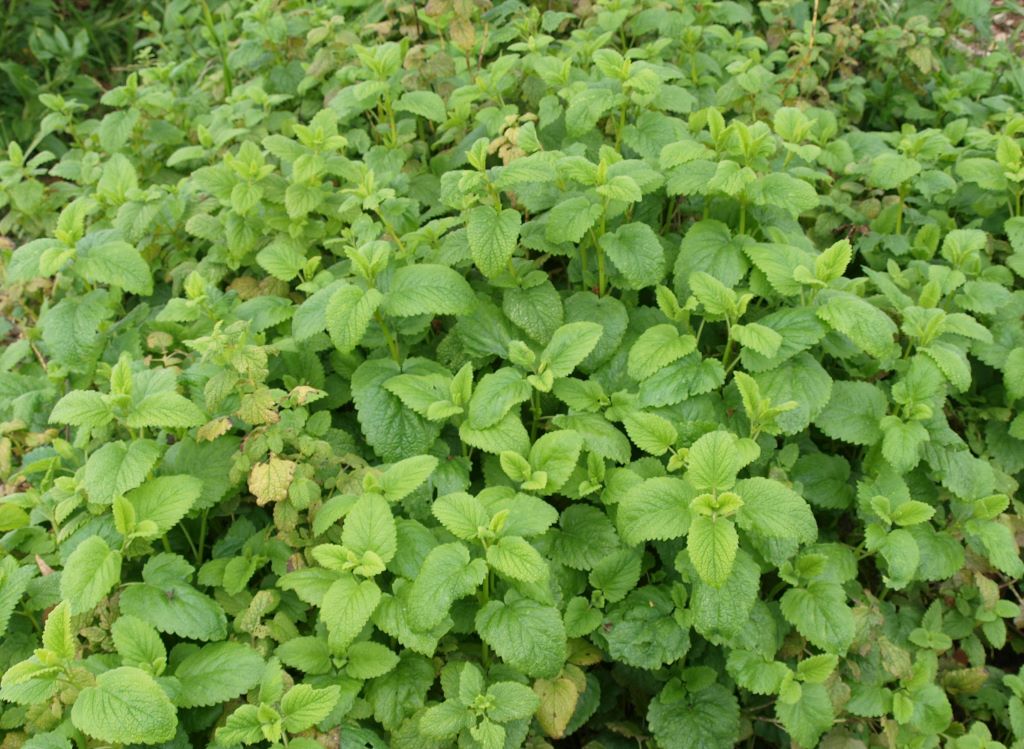Lemon Balm
Melissa officinalis
Lamiaceae
This creeping perennial is locally naturalised across the country, especially in the south. It is fairly easy to identify by its pronounced lemon odor and flavor.
Flavoring: The leaves are best gathered just before the flowers open, by nipping off the growing tips. If you don’t take too much it will resprout quickly and grow even bushier. Add the tender leaves to salads, fruit dishes and cooked foods.
Drink: The fresh or dried leaves can be used to make a pleasant lemon flavored tea. Use alone or with other herbs.
Medicine: The tea was drunk to alleviate fevers, flu and especially for menstrual cramps. It is a diaphoretic carminative, antispasmodic, calmative, stomachic and mild sedative (it is a good bedtime drink).
The leaves have been used externally to treat insect bites and their scent may actually prevent some insects from biting. It has been added to bath water to aid relaxation.
Insect repellant: Lemon balm has been used to repel mosquitoes and other biting insects. Unlike some insect repellants this one doesn’t repel humans as well.
Other uses: The dried leaves are used in potpourri and sachets and are sometimes stored with clothing to repel moths. The oil is used in perfumes. The leaves have been chewed to freshen the breath. It was once used as a strewing herb, thrown on earthen floors to disguise bad smells. Bees love the nectar-rich flowers of lemon balm.
Cultivation: Lemon balm prefers full sun, but will also grow in part shade. It is easily grown from seed or root division and does well in most garden soils. Like its cousins, the mints, it spreads by means of creeping roots and can become a pest unless confined. It also self-sows readily. When I moved house it came with me without any help, hitching a ride in the pots of other plants.











